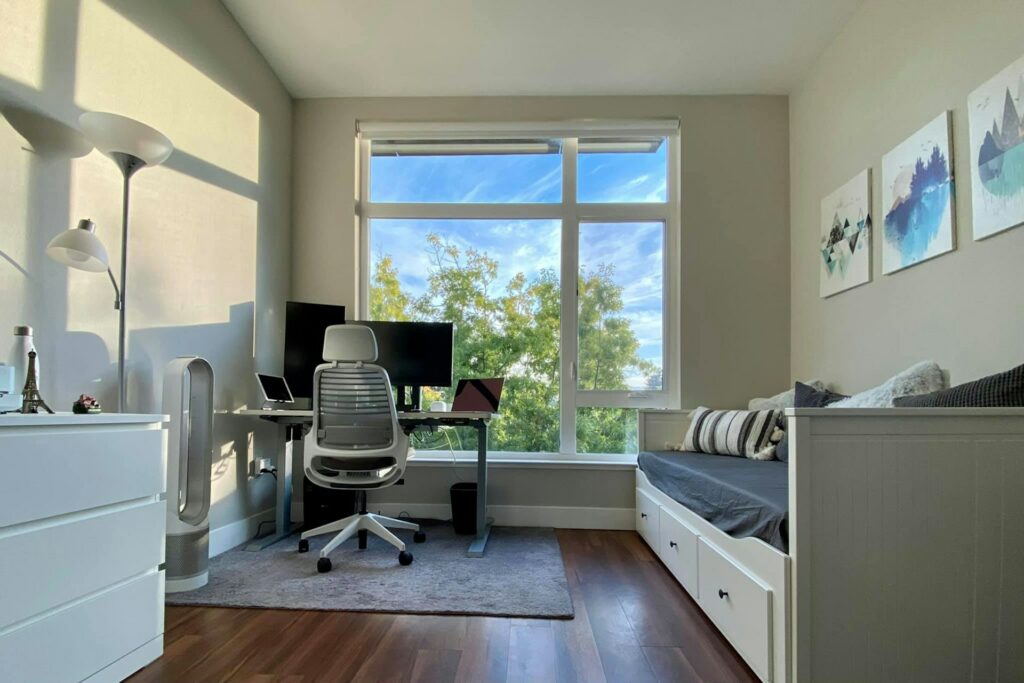For those of us who live in four-season locales, we know that feeling of anticipation that comes with the first glorious day in early spring when the weather gets warm enough to open the windows and let the fresh air in. Is there anything quite so delicious?
If you truly take pleasure in spending time outdoors, this may be the year to step up your enjoyment by adding an outdoor kitchen to your home. An outdoor kitchen–and we’re not just talking here about a grill and patio set–can be designed as a true entertainment area, a space for gathering with family and friends for good meals and long conversations that flow long into the evening.
Outdoor kitchens can be designed in all sizes and shapes to fit every preference and budget. If you’re thinking of adding an outdoor kitchen to your home, here are five helpful tips to get you moving in the right direction.
1- Determine Your Focal Point
Inside, your kitchen is a kitchen. Outdoors, it’s an oasis. Consider what the focal point might be for your outdoor oasis. Do you have a pool? A fabulous garden or spectacular view? Or perhaps you’re thinking of adding a focal point like a firepit or a koi pond with a waterfall feature? Simply adding a few well-placed birdhouses or feeders can also become a source of entertainment. Once you know what you want to highlight outdoors, you can then begin to plan your layout.
2- Plan Your Layout
You saw that one coming, didn’t you? When planning your layout, keep in mind that the two factors that will most impact your layout include the appliances you choose and the space you have available.
Keep in mind also that you don’t have to replicate the full range of appliances you have indoors. Perhaps a grill is all you want or need. Or perhaps you want a refrigerator, but a smaller, under-the-counter one will do fine. However, an outdoor kitchen also provides a great opportunity to take a detour from the traditional. Have you considered a pizza oven? A wet bar? A warming drawer?
Not sure how or what you want will fit into your limited outdoor space? An experienced landscaping designer can help you not only with your practical layout but also provide a boatload of creative ideas.
3- Keep the Elements in Mind
You’re outdoors! And that means you have to consider the effects of rain, wind, and the sun. With that in mind, it often makes sense to install a roof over your outdoor kitchen. A canopy is usually your most inexpensive option, but if you want to splurge a little, consider a pergola or gazebo.
When choosing your appliances, go for long-lasting weatherproof or weather-resistant ones with GFCI cords and electrical receptacles to protect against electrical shock. Cover them when not in use. You’ll also want to stay away from laminate materials for your countertops, as they won’t hold up against the elements. Granite, on the other hand, is a popular, reliable choice for outdoor kitchens.
4- Create Ambience!
Again, you’re outdoors! And in the outdoors, you’re not limited by walls that separate your kitchen or dining area from your living area. So, don’t be afraid to take advantage of it.
If you have the space, consider adding a firepit just steps away from your dining area. Surrounded by sturdy seating and piled with comfortable, colorful cushions, it’s a perfect place to lounge about, take the chill off, and extend a get-together into the later hours. Get creative by adding eye-catching plants and flowers and specialty lighting to further set the mood.
Eye Care: 5 Pro Tips to Keep Your Eyes Safe This Summer(Opens in a new browser tab)
5- Don’t Forget Safety
Whether cooking inside or out, safety should always be a top priority. Here again, if you enlist a quality designer for your plan, they’ll be sure to place your appliances and expected movement around them with that in mind. That being said, your appliances should be located away from anything flammable, such as trash or dry vegetation. In addition, installing a range hood will help ensure proper ventilation.
Consider also your flooring choices and go with no- or low-slip materials. While the lighting around your lounge or dining area can be brightened or dimmed to set the mood, your cooking area should always be well-lit. Walkways should also have adequate lighting.
Lastly, don’t forget to have a fire extinguisher and first aid kit close by for emergencies.
